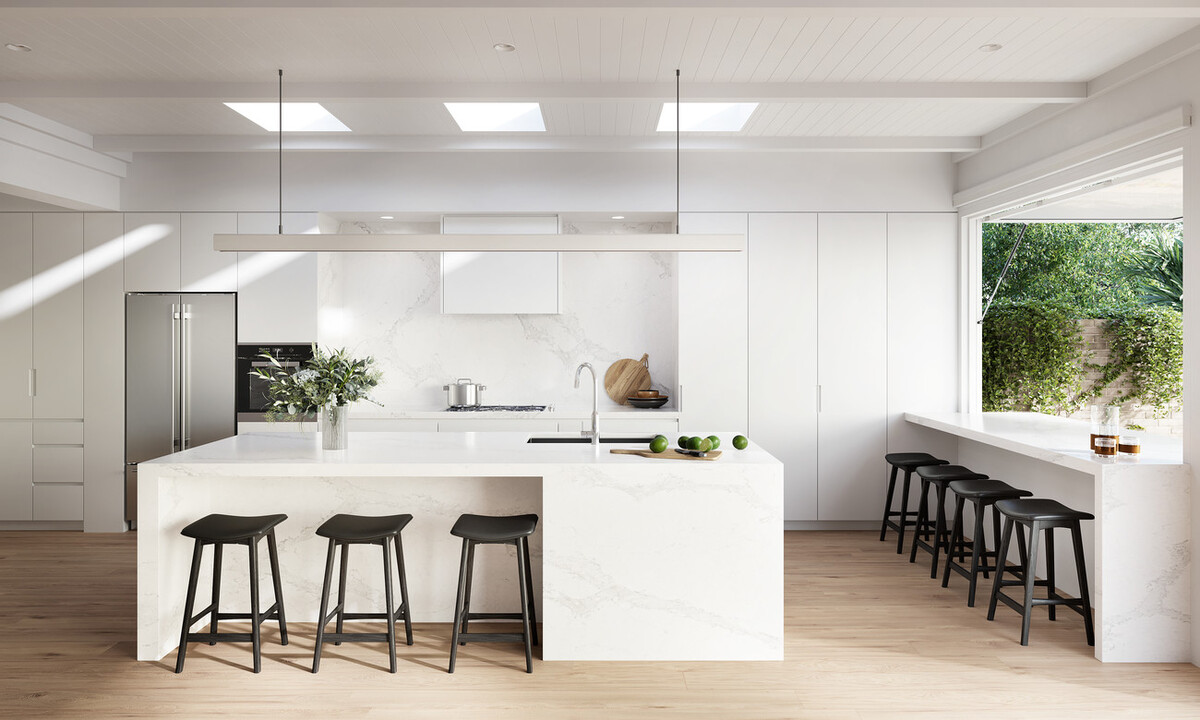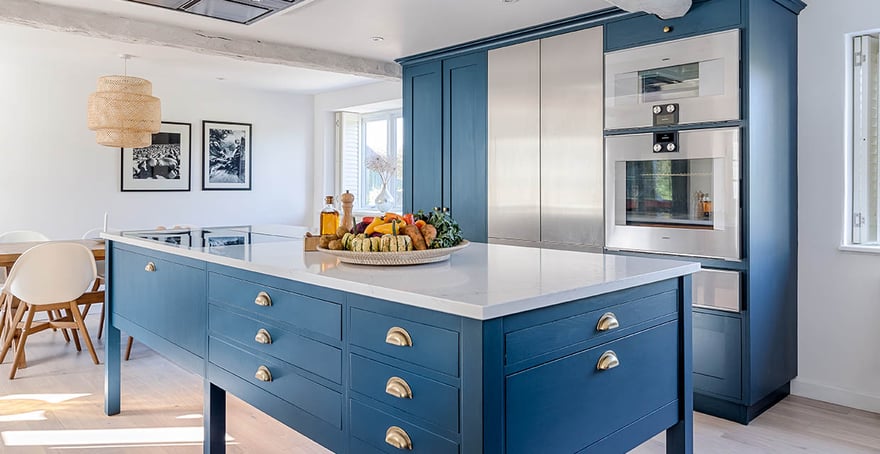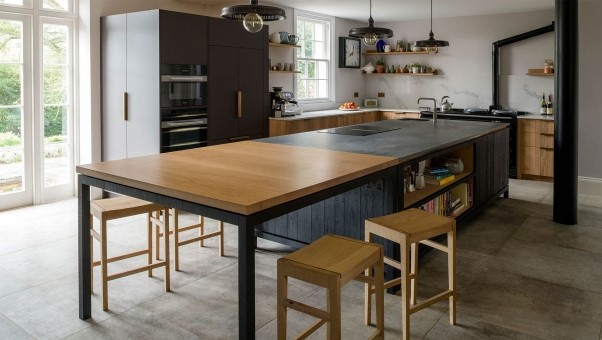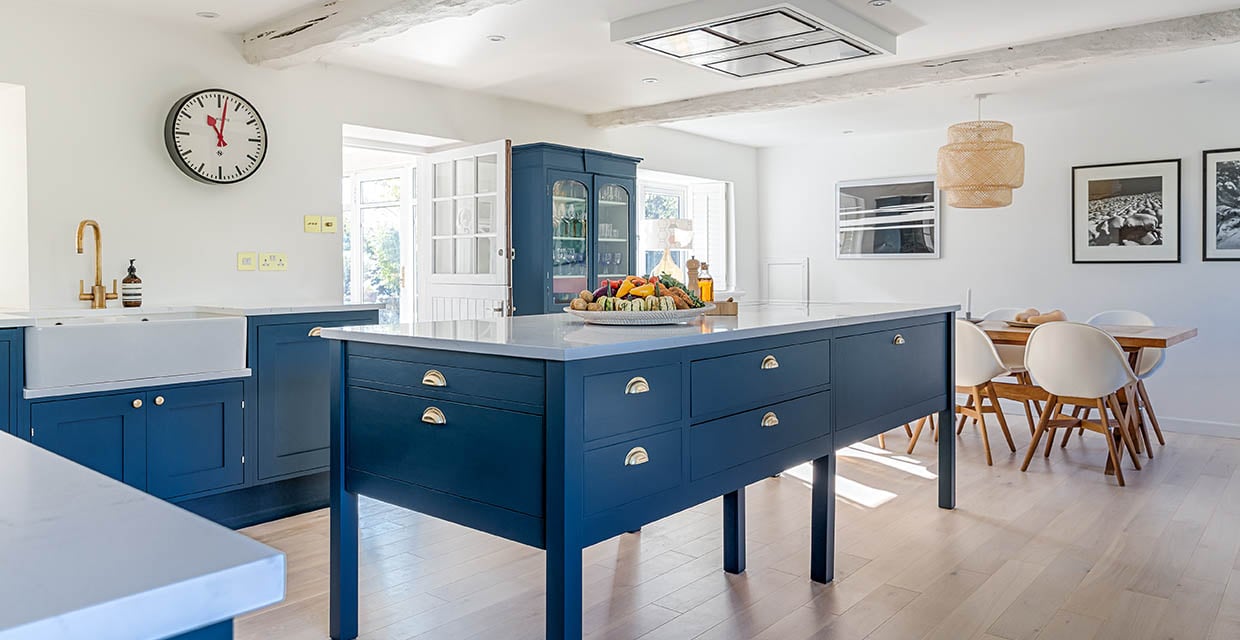
Whether you're revamping your kitchen or compiling a wish list for a new home, the decision-making process can be overwhelming. Distinguishing between a breakfast bar and a kitchen island, which appear quite similar, can be a challenge. Furthermore, determining which one suits your needs adds another layer of complexity. We hope to make this decision easier by providing all the information you need!
The choice between a kitchen island and a breakfast bar boils down to your specific requirements. The primary distinction lies in their functionality:
Kitchen Island: Comprising a cabinet base with a standalone, workable worktop, a kitchen island is not connected to any other part of the kitchen. The worktop can be crafted from various materials, including durable options like quartz and porcelain.
Breakfast Bar: Similar to a kitchen island, a breakfast bar offers 20cm to 40cm (8 to 15 inches) of worktop overhang, providing comfortable seating space. It extends off the sides of base cabinets and can feature materials like quartz and porcelain for a stylish and functional surface.
There are various ways to integrate a breakfast bar, a kitchen island, or both into your kitchen. However, each feature, while similar, caters to slightly different needs. Read on to determine which option is best for you.
Kitchen Island
Case Study: Chef Henrik Ritzén's Caesarstone Kitchen
Kitchen islands come in diverse shapes and sizes, ranging from built-in models to standalone islands or carts.
Built-in islands typically have a base matching the surrounding cabinets, featuring a functional countertop that may end flush with the base, extend slightly or feature a waterfall end to highlight the beauty of the worktop, especially one made of quartz or porcelain. They also often include clever features like wine fridges, cutting boards, stovetops, power outlets and customisable storage designs.
For an alternative look, consider using contrasting cabinetry on your kitchen island. Consider pairings such as a sawn light oak and black painted oak to give a sophisticated and industrial look. Or, think about adding a pop of colour to your kitchen by using a statement colour cabinet for your island and white for the rest of your kitchen like this art deco-style kitchen in Notting Hill.
Strategically placed as a focal point for the space, kitchen islands enhance mobility in the kitchen and provide many possibilities. Perhaps your kitchen island will provide access to essential points such as the stove, fridge and sink. Or maybe you’ll use it to provide additional storage and work surface space, making them ideal for avid cooks.
When deciding if a kitchen island is right for you, here are some of the ideal kitchen types for an island unit:
-
Spacious kitchens with an open floor plan.
-
Kitchens with sufficient walking space around the island.
-
Cooking enthusiasts who need extra workspace.
Breakfast Bar
Case Study: Private Home, West Sussex
Despite sometimes sharing a basic design with kitchen islands, breakfast bars differ in two key aspects. The first is the overhang of the countertop, extending 20cm to 40cm (8 to 15 inches) off the base to create a comfortable seating area. Ideal for bar stools or raised seating, breakfast bars are the perfect addition to a kitchen, providing a casual dining experience for quick meals, snacks or a cup of coffee in the morning. Breakfast bars have also recently become more popular as an informal workspace, ideal for anyone working from home as a remote worker.
The second difference is that a breakfast bar doesn't have to be freestanding like an island; it simply requires space for chairs or stools. Many people may choose to extend their base units or create an L-shape to accommodate a breakfast bar rather than an individual unit. Either way, a breakfast bar is perfect for social dining and creating an inviting atmosphere.
You might be wondering, is a breakfast bar right for me? Here are some of the ideal scenarios for a breakfast bar:
-
Smaller kitchens where a full dining table might not fit.
-
Kitchens with a desire for a casual dining spot.
-
Families or individuals who enjoy a quick breakfast or snack on the go.
Combination Island/Breakfast Bar
Case Study: West Sussex Kitchen Renovation
For those looking to maximize both workspace and casual dining options, the innovative solution is to combine a kitchen island with a breakfast bar. There are many ways to design your dream kitchen to incorporate both options so you won’t have to choose.
This hybrid design offers the best of both worlds, providing ample countertop space for meal preparation and a raised area for quick dining or entertaining guests. A common design is a split-level island, with a standard 92cm (36-inch) height for the workspace and a raised area (up to 107cm / 42 inches) for bar stools to slide under. Another option is to keep the worktop height consistent and choose shorter stools or chairs that fit. Either of these designs allows for flexibility in both functionality and aesthetics.
There are many benefits to combining both an island and breakfast bar such as:
-
Efficient use of space, especially in smaller kitchens.
-
Versatility for both meal preparation and casual dining.
-
Creates a dynamic and visually appealing kitchen design.
-
Encourages social interaction during cooking and dining.
Choosing a worktop for your kitchen island or breakfast bar
Beyond the design of kitchen islands and breakfast bars, the choice of worktop material plays a crucial role in enhancing both aesthetics and functionality. Two popular options that have gained widespread acclaim are quartz and porcelain.
Quartz worktops, thanks to their durability and resistance to scratches, have become a favourite choice for homeowners seeking a low-maintenance option for their new kitchen. These worktops also come in a variety of colours, patterns and finishes, allowing homeowners to customise their kitchen to match any style.
Porcelain worktops also make a fantastic choice for a kitchen island or breakfast bar. They are resilient to heat and stains, as well as versatile in their design. Thanks to the thinner profile associated with porcelain worktops, this material is perfect for homeowners looking to design a contemporary kitchen with a sleek aesthetic.
Ready to create your own dream kitchen?
Whether you choose a kitchen island, a breakfast bar, or the exciting combination of both, these elements can transform your kitchen into a functional and stylish space. Consider your kitchen's size, layout, and lifestyle preferences to determine the perfect addition. Embrace the evolving trends in kitchen design, including the use of materials like quartz and porcelain for worktops, to create a culinary haven that suits your needs and reflects your personal style.
To help you decide on the perfect worktop for your space, request a sample from Caesarstone to visualise it in your home.






